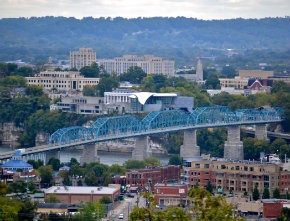Varieties of new churches

I attend a new church in a part of town that some consider bad. I find it lovely, with sprawling 1920s bungalows that were built back when a middle-class family could buy an Arts and Crafts kit house from Sears. The neighborhood has experienced the waning and waxing of generations of racism and gentrification. When people of color moved into the homes, white people moved out to the suburbs. When the neighborhood diversified, economic development slowed because the city neglected to offer perks for businesses and investment for schools. This lack of attention also meant that the neighborhood avoided teardowns and new construction. Now, as these vintage homes turn antique, younger residents who appreciate the ancient oak floors, noise-proof plaster walls, and ethnic diversity are moving in.
Our local presbytery thought the area would be a good place for a new worshiping community, so it hired an evangelist to start one. Across the street, an evangelical church erected a giant facility as a satellite for its multisite congregation. The modern, metal slopes of the building contrast sharply with the historic homes, especially at night, when blue and purple lights illuminate it.
The lead pastor doesn’t visit the church often. Instead, the congregation projects a live video image of him preaching. When he does visit the neighborhood, a security company made up of off-duty sheriffs blocks the road with traffic cones, and the pastor drives up in a Cadillac SUV. The church locks a giant steel fence in order to keep the facility safe. People flock to the church.





